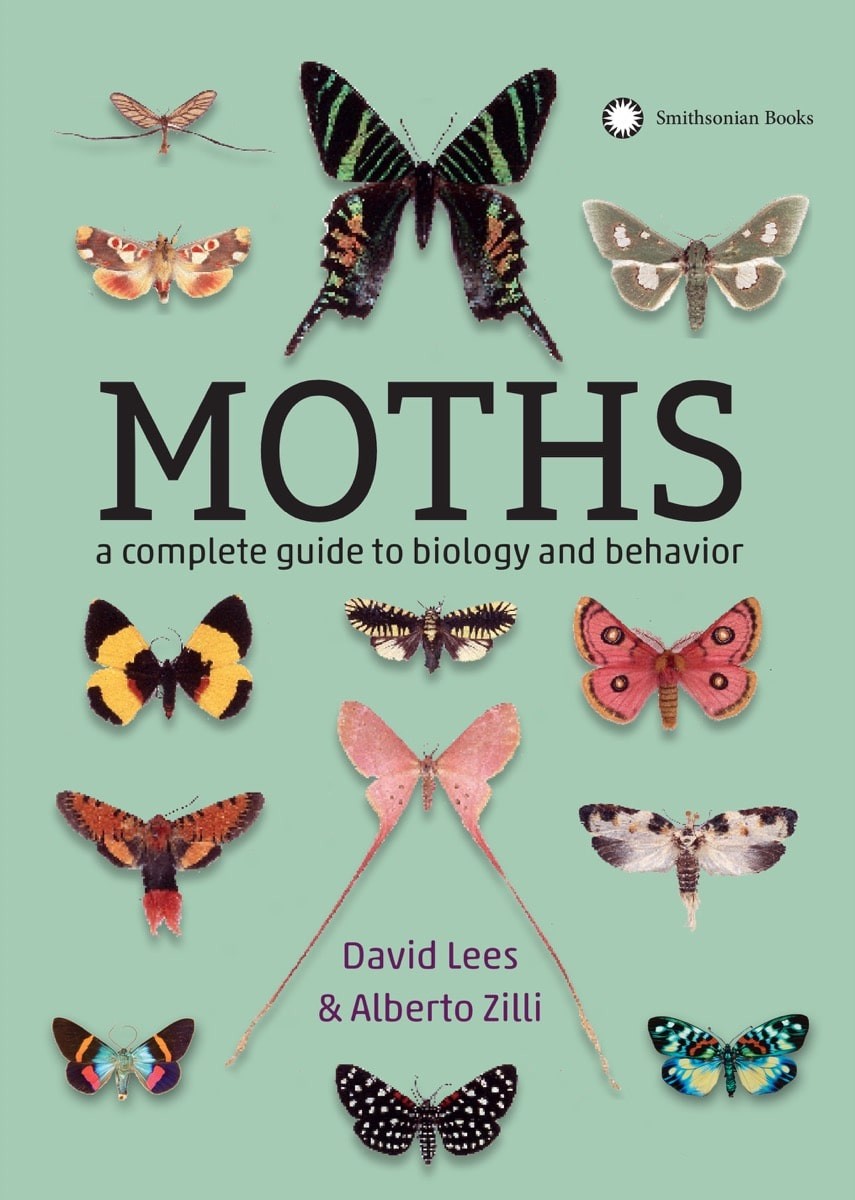The seemingly fatal attraction of moths to flames has been a long-standing puzzle for scientists and casual observers alike. Most moths that are active at night exhibit a behavior known as positive phototaxis, meaning they are drawn to light sources. However, this isn’t a universal moth trait; some species, such as the Old Lady moth (Mormo maura), actually show negative phototaxis and are repelled by light. The mystery deepened with the advent of ultraviolet (UV) lamps before World War II, revealing that UV-rich light sources significantly amplify this attraction. Insects, especially moths, possess a heightened sensitivity to the UV spectrum of electromagnetic radiation, leading to various theories attempting to explain this compelling phenomenon of why moths like light.
 Book cover of 'Moths: A Complete Guide To Biology And Behavior' by David Lees and Alberto Zilli, a resource for understanding moth behavior and light attraction.
Book cover of 'Moths: A Complete Guide To Biology And Behavior' by David Lees and Alberto Zilli, a resource for understanding moth behavior and light attraction.
Theories Behind Moth Attraction to Light: Celestial Navigation and More
One frequently cited theory suggests that moths navigate using celestial light sources like the moon. This theory posits that moths are instinctively drawn to the brightest light in their environment, which under natural conditions would be the moon or stars. It’s proposed that moths maintain a constant angle to these distant light sources for orientation during flight. In this scenario, moths would naturally fly higher on nights when the moon is present.
However, artificial lights present a different scenario. Unlike the parallel rays from a celestial body, artificial lights emit rays in all directions. If a moth attempts to maintain a constant angle to a nearby lamp, it would inadvertently spiral inwards. This spiraling flight path would ultimately lead the moth to collide with the light source. While this “celestial navigation error” theory is compelling, observations of moth behavior around lights reveal a more complex reality. Moths rarely exhibit perfect spirals; instead, their flight paths are often circuitous, involving loops and coils. This suggests that other factors, such as escape responses or wind disturbances, might also play a role in their erratic flight patterns around lights.
Another influential concept is the dorsal light reaction. This broader biological phenomenon explains that many flying creatures instinctively keep the lighter area (typically the sky) above them to maintain correct orientation—they naturally avoid flying upside down. When encountering an artificial light source, moths may misinterpret it as skylight. This confusion could cause them to dip downwards as they approach the light, further contributing to their attraction and erratic movements around it.
Challenging the Infrared Pheromone Theory
In the 1970s, Philip Callaghan proposed an alternative explanation: the infrared theory of light attraction. Callaghan suggested that UV light excites female moth pheromone molecules in the air, causing them to emit infrared microwave radiation. He theorized that male moth antennae, equipped with sensilla of the appropriate size, could detect this radiation, effectively acting as waveguides leading them to the light source.
Despite its ingenuity, this theory has not gained widespread acceptance within the scientific community. While it’s true that male moths are often more frequently observed at light sources, it’s also well-established that the pores on moth sensilla are perfectly sized to directly detect pheromone molecules. Furthermore, the theory doesn’t adequately explain why female moths, not involved in pheromone emission for attracting mates in this context, are also drawn to light. Given that males are generally the more mobile sex, their higher presence at lights could be attributed to other factors unrelated to infrared pheromone detection.
The Distance of Light Attraction and Environmental Factors
The effective range at which artificial lights attract moths is still an area of active investigation. A classic experiment conducted in 1978 by Robin Baker and his team at Manchester University indicated that ground-level light traps primarily attract moths from a very short range, just a few meters. However, trials conducted in Germany in regions with minimal light pollution revealed a slightly larger attraction range for street lamps, extending to approximately 30–80 feet. These findings suggest that under typical conditions, artificial lights mainly attract moths that happen to be in close proximity to the light source’s immediate area of influence during their nocturnal wanderings.
Light attraction is significantly more effective on dark nights or in environments with minimal competing light sources, most notably the moon. When ambient light is reduced, the relative brightness of an artificial light source increases, potentially extending its attraction range. The moth’s tendency to maintain a constant angle to light rays could then enable it to navigate towards a single, intensely bright light source from distances of kilometers, perceiving it as a distant star.
Species-Specific Behavior and Habitat Familiarity
Tropical biologist Daniel H. Janzen, in a seminal 1984 paper focusing on large moths in Costa Rica, observed an intriguing behavior among hawkmoths (Sphingidae). He noted that many hawkmoths were feeding on flowers near light sources but were not directly attracted to the lights themselves. Janzen proposed that sphingids exhibit a change in behavior during their adult lives. He suggested that newly emerged hawkmoths spend an initial period establishing a “home range,” relying on celestial cues and exhibiting a stronger positive phototactic response during this phase. However, once they become familiar with their habitat, they might switch off this initial phototactic response, instead relying on landscape features for orientation. Janzen’s observations indicated that fresh, younger hawkmoths were more commonly found at lights, while older, more worn individuals were often seen feeding at flowers nearby, supporting his theory of a behavioral shift related to habitat familiarity.
It’s crucial to remember that not all moths are universally attracted to light, and the reasons behind both positive and negative phototaxis are still not fully understood. Negative phototaxis, however, has a clear adaptive advantage for certain species. For instance, cave-dwelling moths like the Tissue Moth (Triphosa dubitata), which seeks refuge in dark crevices, actively navigate towards dark patches among rocks, demonstrating a clear benefit to light aversion for their survival.
In conclusion, the question of “Why Do Moths Like Light?” is not answered by a single, simple explanation. It’s a complex interplay of factors, likely involving a combination of navigational errors, innate responses to light, and species-specific behaviors. While theories like celestial misnavigation and dorsal light reaction offer plausible explanations for positive phototaxis, ongoing research continues to unravel the nuanced reasons behind this fascinating and often fatal attraction.
